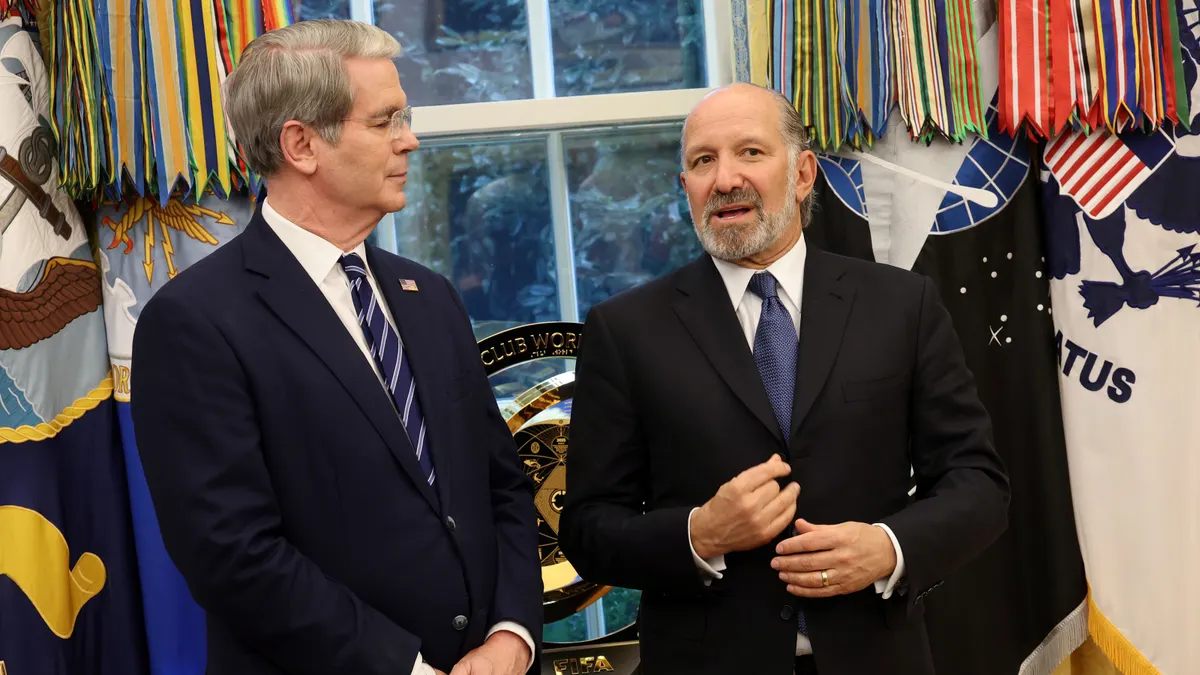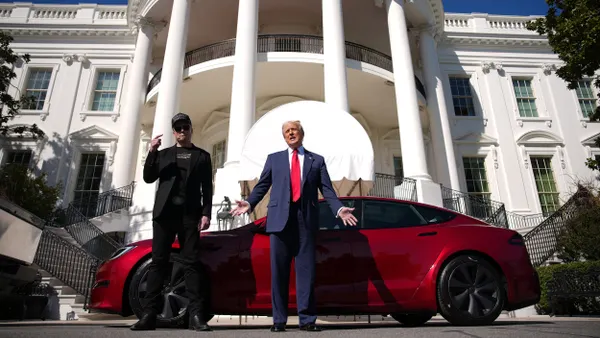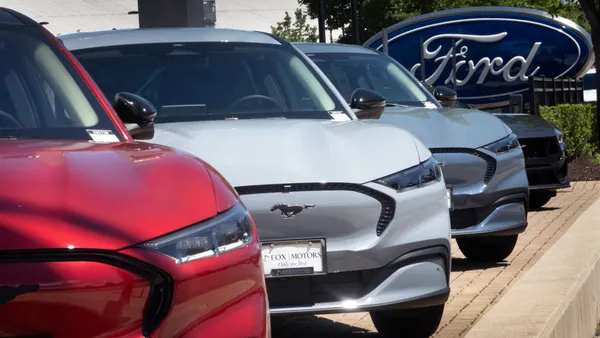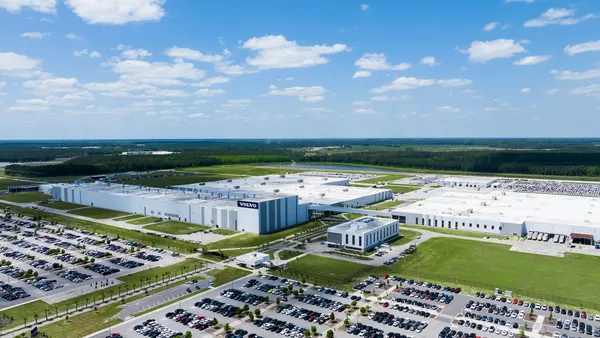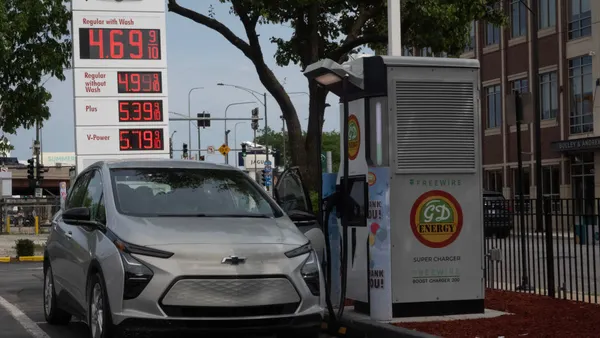Dive Brief:
- Autonomous driving technology developer Waymo is partnering with Tier 1 automotive supplier Magna International to jointly build robotaxis at a new 239,000-square-foot facility in the Metro Phoenix area, the company announced in a May 5 blog post.
- The factory is a multi-million dollar investment and will create hundreds of jobs in Mesa, Arizona, that support Waymo’s plans to scale its commercial Waymo One autonomous ride-hailing service to additional U.S. cities.
- Through next year, the two companies aim to outfit 2,000 additional Jaguar I-PACE electric SUVs with the “Waymo Driver” autonomous driving technology stack in Arizona for use in Waymo’s ride-hailing service. But the facility will be capable of building “tens of thousands” of robotaxis a year once fully operational, according to the release.
Dive Insight:
Waymo said its Waymo One autonomous ride-hailing service has grown significantly over the past several years, creating demand for additional vehicles equipped with autonomous driving technology in order to scale the commercial mobility service to additional U.S. cities.
Waymo operates roughly 1,500 vehicles across Austin, Los Angeles, Phoenix and the San Francisco Bay Area and currently provides over 250,000 paid trips per week in its driverless robotaxis, according to the release. The next planned launch cities for Waymo One include Atlanta, Miami and Washington, D.C.
The new Arizona facility will allow Waymo and Magna to install AV hardware on multiple vehicle platforms simultaneously — and at higher volumes. Among the equipment being installed at the plant is an automated assembly line. In an email to Automotive Dive, Waymo Product Communications Manager Chris Bonelli said the company has a contract manufacturing partnership with Magna, which leases the building.
The robotaxi build process includes sub-assembly of the Waymo Driver components and general assembly to integrate them into the Jaguar I-PACE SUVs, according to Bonelli. Once installed, Waymo drives the vehicles manually to validate the hardware and software before commissioning it for use by Waymo One.
“We have a series of hardware and software checks in place to be sure all components are working as intended,” Bonelli said.
In the blog, Waymo said it has implemented new processes at the Arizona facility that significantly reduce the time and cost required to certify its autonomous vehicles to carry riders. Vehicles assigned to Waymo’s Phoenix fleet can drive autonomously out of the facility and directly into service in less than 30 minutes after leaving the factory.
For Waymo One vehicles destined for ride-hailing service in other cities, they can be deployed within hours after being shipped to a local depot, according to Waymo.
“The Waymo Driver integration plant in Mesa is the epicenter of our future growth plans,” said Ryan McNamara, Waymo VP of operations, in the release. “With our partners at Magna, we’ve opened a manufacturing site that enables the cost efficiency, flexibility, and capacity to scale our fleet to new heights.”
Waymo uses a fleet of modified Jaguar I-PACE vehicles for its Waymo One ride-hailing service, but the company plans to add Zeekr RT passenger vans from China-based electric vehicle brand Zeekr. The EV will also be outfitted with the Waymo Driver in Arizona. Zeekr is majority owned by automaker Geely, one of China’s biggest OEMs and the parent company of Volvo Cars.
Although tariffs on imported vehicles could impact the cost of the Zeekr RT, Bonelli said Waymo is “monitoring the dynamic tariff situation closely” and will continue to test the EV on public roads as planned.
Waymo’s collaboration with Magna follows a similar partnership announced on April 30 with Toyota Motor Corp. Waymo and Toyota plan to collaborate on the development of an autonomous vehicle platform and explore ways to integrate Waymo’s technology into personally owned Toyota vehicles.







